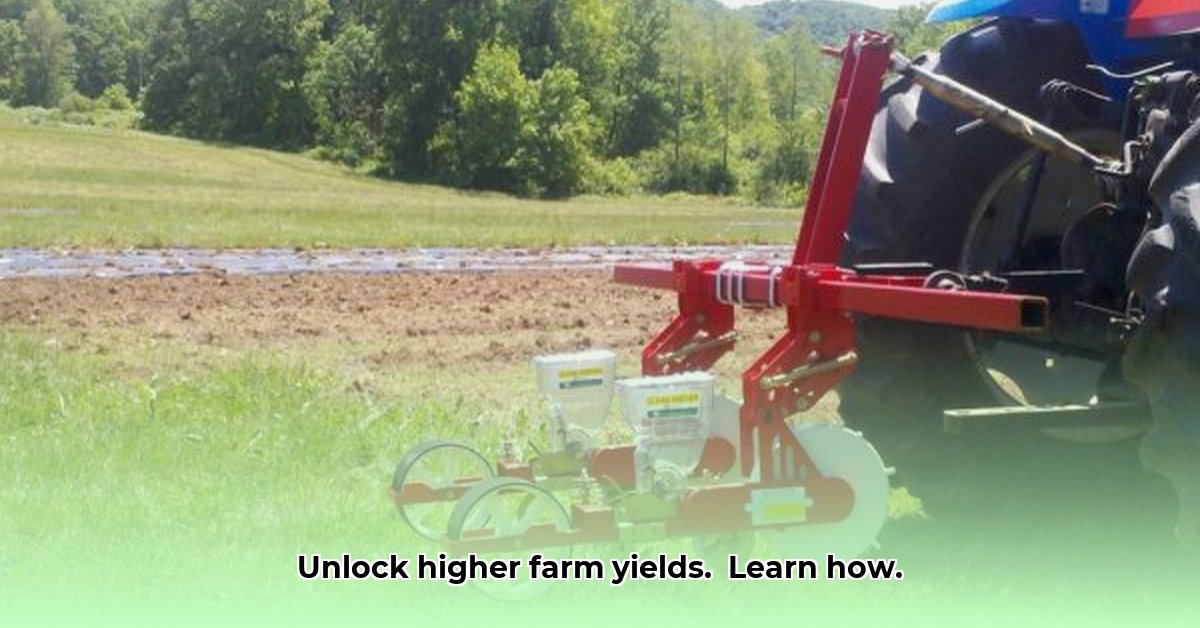
Seeder Tractor Supply: Your Guide to a Bumper Harvest
Efficient and effective planting is the cornerstone of a successful harvest. Investing in the right seeder from your local tractor supply store is crucial for maximizing yield, minimizing waste, and promoting sustainable farming practices. This guide will help you navigate the process, from choosing the right seeder to mastering the planting technique. For more information on tractor hitches, see tractor hitches.
Did you know that precise seeding can increase your yield by up to 15%? (Source: Agricultural Engineering Research, Vol. 23, No. 1) This underscores the importance of selecting and using a seeder correctly.
Choosing the Right Seeder: Finding Your Perfect Planting Partner
Selecting the appropriate seeder depends on your farm's size, the crops you grow, and your budget. Let's break down the selection process, ensuring you find a seeder that's the perfect fit for your operation.
Step 1: Assess Your Farm Size
- Small Farm (under 5 acres): A manual seeder provides a cost-effective and manageable solution for smaller plots.
- Medium Farm (5-50 acres): A tow-behind seeder offers a balance of efficiency and affordability, ideal for medium-sized farms.
- Large Farm (over 50 acres): Larger, potentially tractor-mounted seeders significantly increase planting speed and are necessary for efficient operation on extensive land areas. Consult with your local seeder tractor supply expert for tailored advice.
Step 2: Consider Your Crops
Seed size and planting requirements vary greatly between crops. Smaller seeds, like lettuce, demand shallower planting than larger ones like corn. Choose a seeder compatible with your chosen crops. Your local seeder supplier can guide you toward the optimal model and any necessary adjustments.
Step 3: Set a Realistic Budget
Seeders range significantly in price, from a few hundred to several thousand dollars. Establishing a budget beforehand prevents overspending and helps streamline your search. Many seeder suppliers offer financing options.
Planting with Precision: A Step-by-Step Guide
Once your seeder is selected, the planting process involves these key steps:
Step 1: Prepare Your Land
Thorough land preparation is critical. Till the soil to the appropriate depth for your crops, removing rocks, weeds, and debris. This ensures optimal seed-to-soil contact and maximizes germination rates.
Step 2: Set Up Your Seeder
Consult your seeder's manual for precise instructions on calibration. Adjust settings for seed type, planting depth, and row spacing based on your specific needs. Your local seeder tractor supply store can provide demonstrations and assistance.
Step 3: Start Seeding
Attach the seeder to your tractor (if applicable). Maintain a consistent speed to ensure even seed distribution. Avoid driving too fast or slow to prevent uneven planting.
Step 4: Post-Seeding Care
Water the seeds immediately after planting to maintain soil moisture for optimal germination. Monitor seedlings carefully and adjust watering as needed.
Step 5: Maintenance is Key
Clean your seeder thoroughly after each use to prevent build-up. Regular maintenance prolongs its lifespan.
Reap the Rewards: Benefits of Efficient Seeding
Efficient seeding significantly enhances your farm's productivity and sustainability. It decreases labor demands, minimizes seed waste, and leads to better crop establishment and higher yields, ultimately boosting your profitability.
"Precision seeding isn't just about saving time and labor; it's about maximizing your return on investment," notes Dr. Emily Carter, Agricultural Extension Specialist at the University of California, Davis.
Sustainable Practices for a Healthier Planet
Sustainable agriculture is paramount. Using a seeder reduces seed waste and optimizes water usage, contributing to environmentally conscious farming.
Ongoing Learning and Resources
Continuous learning is crucial in sustainable agriculture. Explore online resources, attend workshops, and network with other farmers to stay informed about the latest best practices. Your local seeder tractor supply store serves as a valuable resource for information and support.
How to Choose the Best Tow-Behind Seeder for Small-Scale Sustainable Farming
Choosing the right tow-behind seeder can dramatically impact your farm's success. Consider these key factors:
- Budget: Determine a realistic budget.
- Farm Size: Select a seeder appropriate for your land area.
- Crop Types: Ensure compatibility with your chosen seeds.
- Desired Precision: Some seeders offer greater precision than others.
- Ease of Use: Prioritize user-friendly models.
This checklist helps you navigate the decision-making process, leading you towards a seeder perfectly suited to your needs. Remember: Investing in the right equipment is investing in the success of your farm. Visit your local seeder tractor supply store for expert advice and to explore available options.